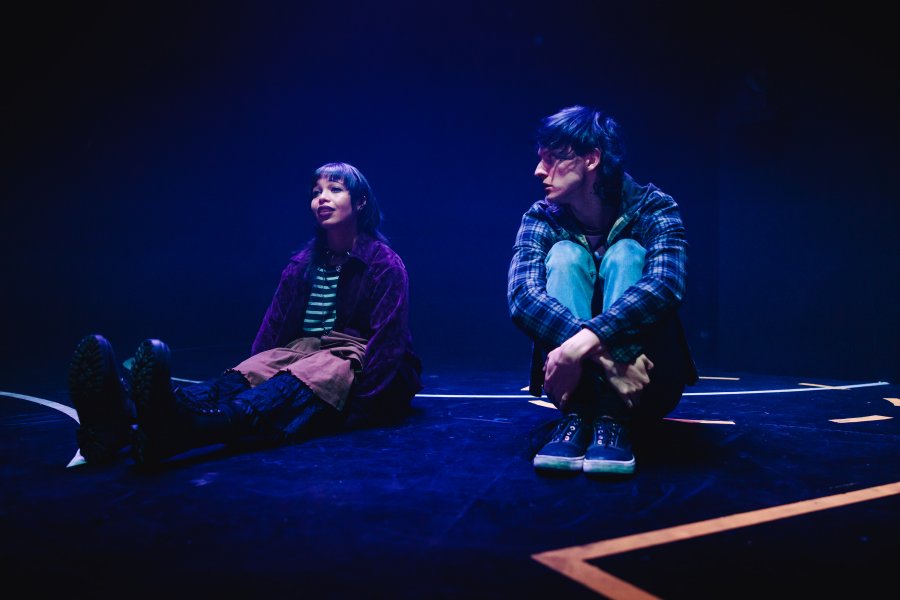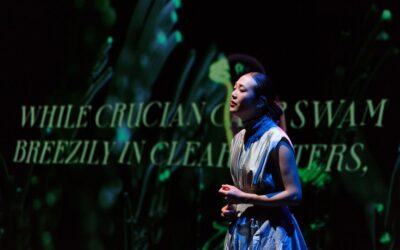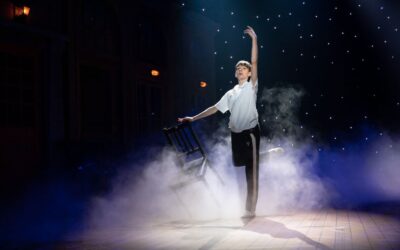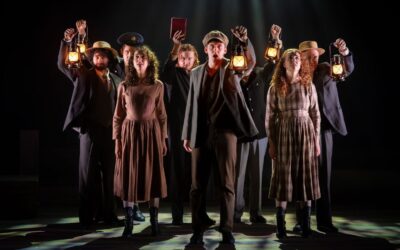By Darby Turnbull
I saw Declan Greene’s Moth at Malthouse in 2010 as a socially isolated and awkward 16-year-old, lured in by the promise of a piece of theatre delving into adolescent angst, bullying, mental illness and death. In short, I was exactly the target audience. Revisiting a piece with over a decade of retrospection is always valuable though, as I reflected to my theatre companion, I think I had exactly the same response on both occasions; more of a desire to connect with the material rather than actual resonance.
Claryssa and Sebastian have the kind of bond that emerges out of joint social ostracization, allies in mutual contempt between them and their peers. Lucy Ansell and Adam Noviello make a winning double act; revelling in the two teens acidic observations and caustic impressions of the people in their world. This iteration, directed by Briony Dunn is presented as a memory piece with the events and people explicitly being recreated by the pair as a gleefully dark bit of light revenge against the people who abuse, patronize and otherwise deride them. There’s a desperate co-dependency to their interactions with each other and both actors evoke the suffocating nature of being the only tangible person in each other’s world, often sharing insults and barbs with increasing venom. Of course, the outside world has to intercede, and their fragile bond is fractured by a particularly vile act of bullying and assault that leads the two to betray each other in truly horrific circumstances. What follows is Sebastian descending into a prolonged psychotic episode with grandiose delusions about his role as a doomsday prophet and saviour.
It’s evident Greene’s text and Briony Dunn aspire to dramaturgical equity between the two characters, but Sebastian’s experience vastly overwhelms the performance despite persistent efforts to give Claryssa equal standing. Lucy Ansell is a magnetic performer with a formidable stage presence, and she imbues Claryssa with a deep sadness and self-disgust and an eerie fascination with death and self-injury. Her arc and pain draw less attention that Sebastian’s and I think more could be done with the effects of misogynistic aspects of the abuse she receives which Sebastian underestimates and inadvertently participates in. Ansell has a self-possession and maturity that sits in contrast to characters youth but she more than holds her own against the more grandiose turns in the plot.
Adam Noviello very adeptly handles the internal shifts in Sebastian’s character and conveys the magnitude of what he’s experiencing. Like Ansell there’s an element of retrospection to their portrayal of an adolescent, especially one we’re told is socially reviled. Noviello has a great deal of charm and magnetism that’s necessary for audience engagement, but they come across as more of an enigmatic misfit rather than the pitiful outcast with poor social skills we’re told he is. There’s frequently little logic associated with adolescent ostracization but the teenagers as played by Ansel and Noviello imply more social mobility than the text conveys. Noviello is very fine in the sections that show the euphoria, disorientation and destabilization of Sebastians’ religious visions and rapid dissociation.
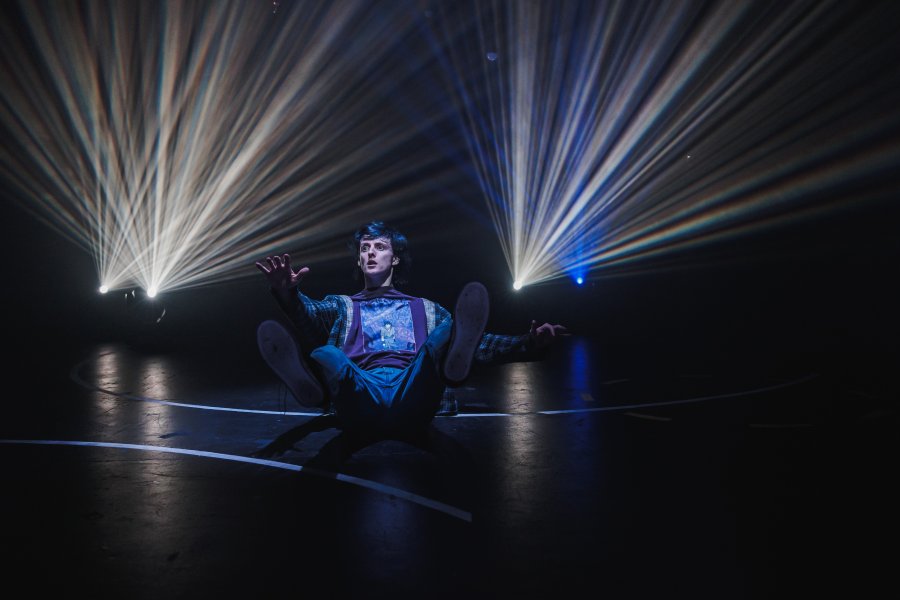
Greene and the creative team certainly display a commitment to a respectful and impactful depiction of adolescent schizophrenia, which is both underrepresented and misrepresented frequently in the public consciousness. I know many people both personally and professionally who experience various degrees of psychosis, including religious delusions and there was much I recognised in Sebestian’s presentation and Claryssa’s responses. Greene’s text and Dunn’s production is highly stylized with anime and comic book imagery especially in Sebastian’s hyperbolic speeches which Noviello delivers with fervor. This is where I find a personal barrier to connection, I’ve only seen one or two pieces of theatre that engage with the more mundane and everyday aspects of schizophrenia, usually texts focus on the impact of the family and community often at the expense of the person experiencing the symptoms or the creatives become very immersed in what they imagine the experience to be. It’s an opportunity for Greene to display his lyricism and imagination as writer and for a production to display their ingenuity in bringing it to life but the stylisation comes at the cost of how much substance the audience gains from it. For example, in this version of the text it’s implied Sebastian is hospitalized and escapes before he’s gunned down by the police who (erroneously) believe he’s carrying an explosive device. This does happen, people do abscond from hospital and the police do use fatal interventions against people experiencing psychosis. However, there’s a lot that happens in the middle of all that. for example, it’s quite difficult to leave hospital, especially people experiencing the level of psychosis that Sebastian is; the reality of being put on a treatment order, intensive care (which involves a locked ward and increased security) and mandated medical treatment are all possibilities that aren’t explored within the text which, naturally it’s a fable and doesn’t have to necessarily prescribe to realism when that isn’t the creative aim but then runs the risk of sensationalizing a very visceral and stigmatized experience. For me, and a few other people I spoke to this production felt more like a display of craft than a tangible, cathartic insight into these characters psyches.
However, as a display of craft it’s exceptional. Niklas Pajanti’s lighting is an extraordinary display of ingenuity, some of the best I’ve seen in the Theatreworks space and certainly in the independent theater scene. I hope awards bodies are paying attention; the atmosphere and images that he conjures are a marvel. Dunn’s direction often emphasis the isolation and dysregulation of the characters and the lighting evokes that with aplomb, with striking individual spots for scenes between Claryssa and Sebastian and magnificent kinetic mosaics effects for the heightened moments of Sebastian’s subconscious. Darrin Verhagen’s sound design incorporates chilling choral influences and electronica, and Betty Auhls costumes immediately made me flashback to early 2000’s emo culture.
Moth will undoubtedly be a divisive and provocative production. It’s on the VCE drama list and will be a wonderful opportunity for students developing their craft to analyze, debate and untangle and there’ll certainly be a number who find it cathartic and compelling.
Image: Daniel Rabin

